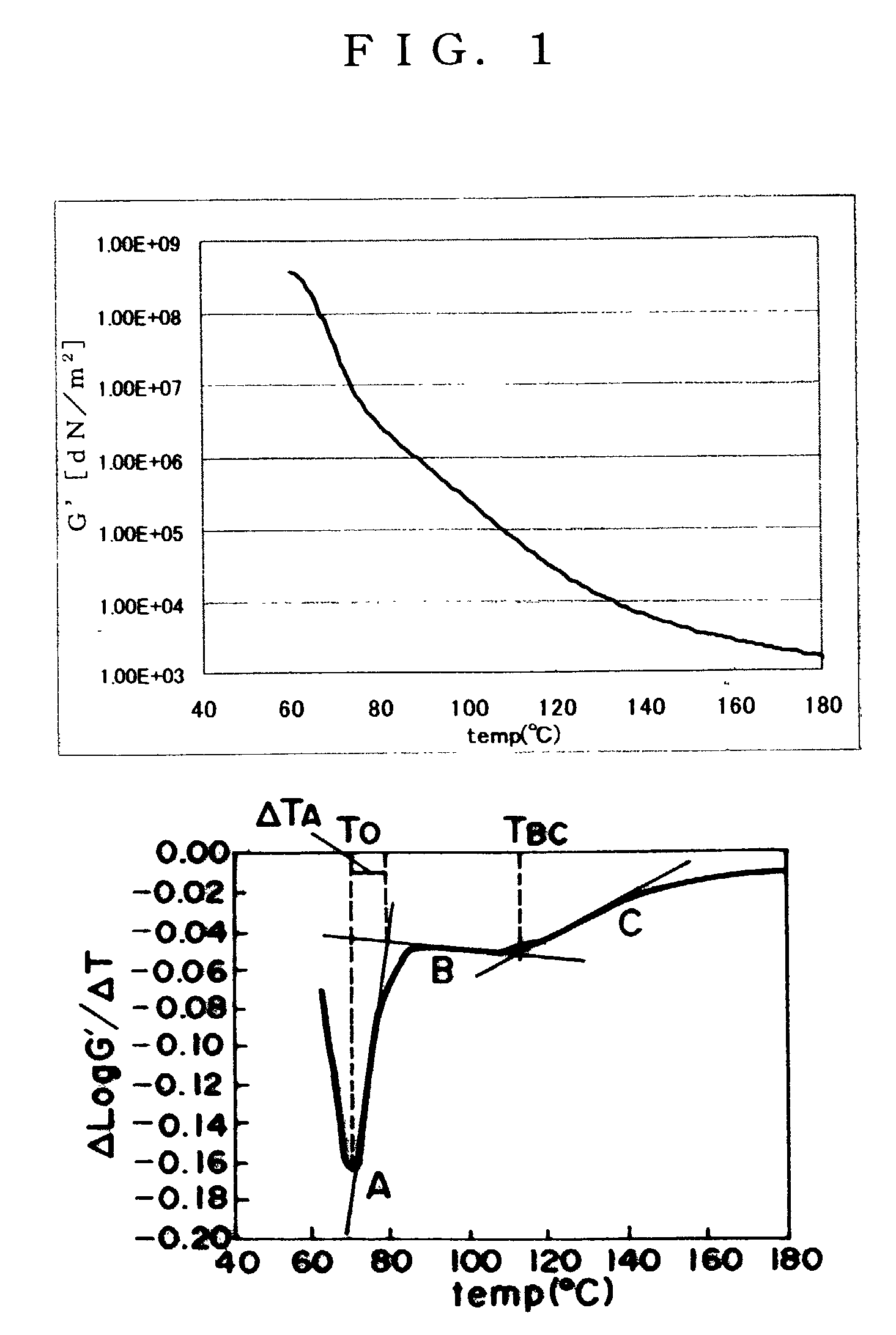Non-Magnetic Toner
a toner and non-magnetic technology, applied in the field of toner, can solve the problems of additive added to the toner particle, the charge amount of toner remains unadjustable, and the reduction of the toner amount, so as to achieve excellent fixing ability and development ability.
- Summary
- Abstract
- Description
- Claims
- Application Information
AI Technical Summary
Benefits of technology
Problems solved by technology
Method used
Image
Examples
production example 6
of Toner
[0161]A toner (F) was obtained in the same manner as in except that the amount of the 70% solution of the polymerization initiator 1,1,3,3-tetramethylbutylperoxy-2-ethylhexanoate in toluene was changed to 12 parts by mass.
production example 7
of Toner
[0162]A toner (G) was obtained in the same manner as in except that: the amount of divinylbenzene to be added was changed to 0.05 part by mass; and the temperature at which stirring was performed by using a paddle stirring blade after granulation was changed to 65° C.
production example 8
of Toner
[0163]A toner (H) was obtained in the same manner as in except that: no hydrocarbon-based wax was added; and 9 parts by mass of an ester wax (behenyl behenate: maximum heat absorption peak=75° C., Mw=700) were added.
PUM
| Property | Measurement | Unit |
|---|---|---|
| temperature | aaaaa | aaaaa |
| temperature | aaaaa | aaaaa |
| temperature | aaaaa | aaaaa |
Abstract
Description
Claims
Application Information
 Login to View More
Login to View More - R&D
- Intellectual Property
- Life Sciences
- Materials
- Tech Scout
- Unparalleled Data Quality
- Higher Quality Content
- 60% Fewer Hallucinations
Browse by: Latest US Patents, China's latest patents, Technical Efficacy Thesaurus, Application Domain, Technology Topic, Popular Technical Reports.
© 2025 PatSnap. All rights reserved.Legal|Privacy policy|Modern Slavery Act Transparency Statement|Sitemap|About US| Contact US: help@patsnap.com



